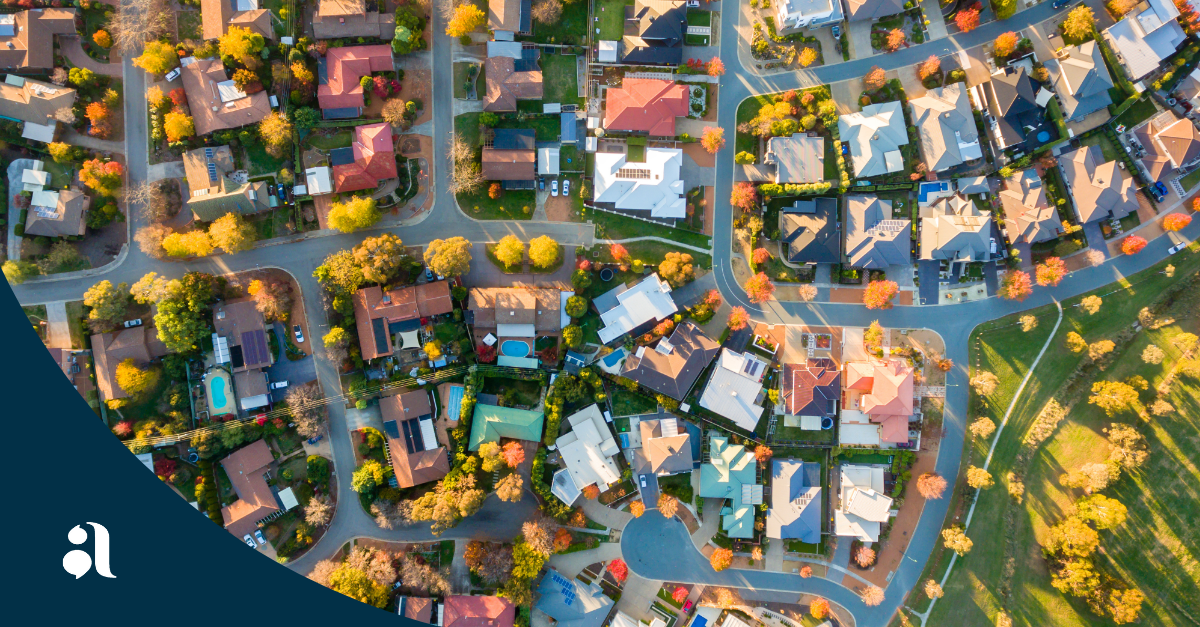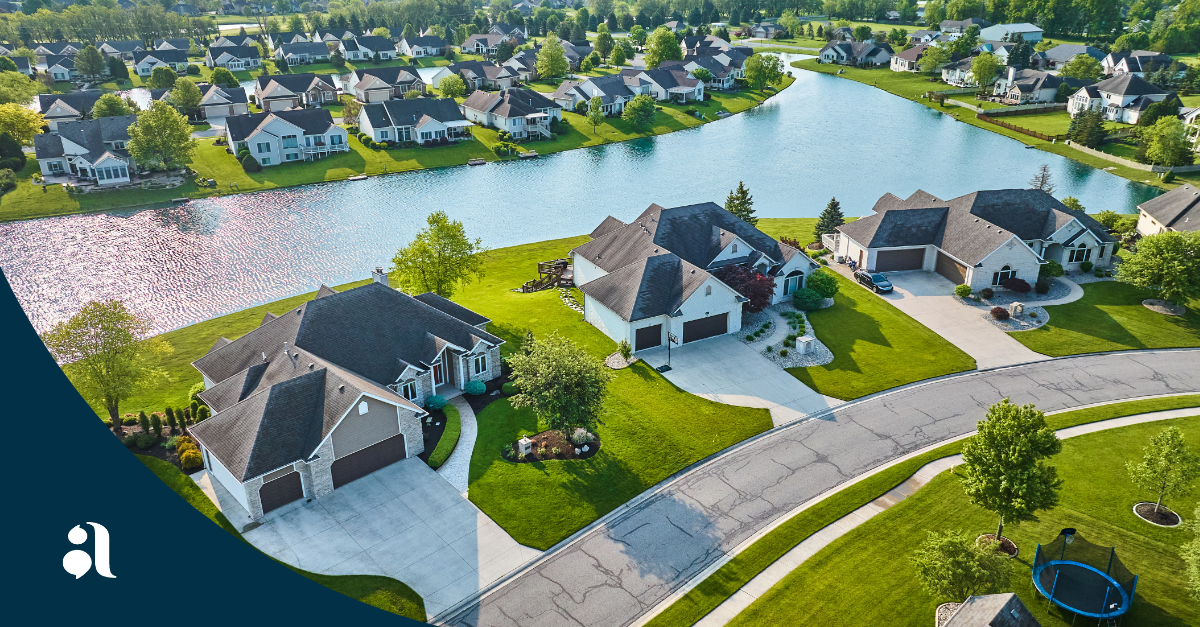
Top Prospect Engagement Tools Land Developers Love
Prospect Engagement Tools for Land Developers
There’s a quiet arms race happening in the land development world—and it’s not about the homes. It’s about the experiences that lead buyers to them. Communities are no longer judged solely by square footage or price per acre but by the journey prospects take before they ever sign on the dotted line.
That journey begins and ends with the right tools—built to meet prospects where they are, and take them where they want to go.
The New Landscape of Land Development
The role of a land developer has changed. You’re no longer just delivering parcels to builders. You’re creating complex, mixed-demographic communities with embedded identity, lifestyle, and intent. Every community now has its own “micro-brands” nested inside it.
Let’s look at a well-known Florida community with 150,000 residents and multiple developers. Within it, neighborhoods like Shellstone at Waterside and Wild Blue at Waterside, each built by different developers, share an amenity called Midway Park. To honor each neighborhood’s unique identity, two separate apps were created—one for each community—while still allowing both to access the shared park. The role of the land developers? To make sure each experience feels equally meaningful, even within a shared framework.
Prospect engagement tools give you the ability to tell each story, to the right buyer, at the right moment.
Why Prospect Engagement Tools Matter Now
With more options on the table, your buyer’s path to purchase is no longer linear. It’s emotional, research-driven, and layered with comparison. In Texas, Florida, and South Carolina, communities can sit side-by-side—but only one gets the sale. Why? Because one had a better experience.
A simple comparison from the field:
- Community A: Beautiful signage, helpful sales team, brochure on the counter.
- Community B: Branded mobile app, custom itinerary, digital builder showcase, personalized follow-up.
Guess who earns the trust?
Trust isn’t just won at the clubhouse. It starts weeks before, often with a tap on a screen.
Understanding Land Developers' Unique Needs
This isn’t just about fancy software. It’s about operational reality.
Land developers deal with multiple builder partners, overlapping buyer profiles, evolving phases, and stakeholders from municipalities to HOAs. Engagement has to work across:
- Different audiences (55+, families, professionals)
- Varied price points and builder brands
- Staged releases and evolving amenities
Your engagement strategy must be modular. That means tools that don’t just capture interest but respond to where that interest is coming from—and where it's headed next.
Because each buyer journey is different, your internal teams need to be aligned. That’s where we go next.
Sales Teams vs Marketing Teams: A Tailored Approach
Many communities strategies falter not because of poor product—but poor process. Sales and marketing too often work in silos, and the result? Lost leads. Missed signals. Frustrated buyers.
Here’s what strong tools enable:
- Sales sees lead behavior: what content was viewed, what events were attended.
- Marketing knows what’s converting and what’s not, adjusting messaging on the fly.
- Leadership can see what amenities are thriving and which are underused, enabling smarter, data informed decisions on where to invest..
One land developer shared this with us:
"High usage of our tennis and pickleball courts showed us we needed to expand, an insight that helped us plan for growth and maximize amenity ROI.”
When the data flows, the conversation flows—and that’s when digital meets human.
Digital Tools That Sell Real Estate and Dreams
We say this with confidence: your prospect is digital-first—even when buying a physical home.
You need tools that show, tell, and invite:
- Interactive Site Maps: Let users explore lots, amenities, and builder inventory.
- Branded Community Apps: Offer a self-guided experience on-site and post-visit.
- Personalized Content Feeds: Serve up event invites, video tours, and construction updates tailored to user behavior.
Digital doesn’t replace sales. It augments it—especially when multiple buyer types coexist in one place.
Mapping Multiple Audiences in One Community
Your community isn’t just one story—it’s a collection of them.
Let’s imagine a South Carolina development:
- “The Palms”: a 55+ community with bocce leagues, wellness programming, and walking clubs.
- “Northview”: luxury homes starting at $1.5M, gated access, private concierge.
- “Sandstone Village”: starter homes and townhomes for young families and professionals.
Now imagine one app that can:
- Identify user preferences during login
- Offer separate event calendars per persona
- Customize messaging based on life stage
One developer told us:
“We don’t have to tell just one story. Our tools are tailored to each neighborhood, helping tell its unique story—so buyers feel like they belong.”
This approach pays off especially with your most qualified, high-intent buyers.
Qualifying the “Stay and Play” Guest
There’s something powerful about offering buyers the ability to book a visit to experience and explore your community. They’re no longer curious. They’re deciding.
The “Stay and Play” offer is one of the most effective tools for surfacing these high-intent prospects. But it only works when it’s paired with strong follow-through.
Example of a high-performance flow:
- Booking Pages: White-label branded with visitor details.
- Personalized Itinerary: Configurable app experience with builder tours, restaurant recs, and welcome basket pickup.
- Post-Visit Engagement: Automated email with thank-you note, interactive map reminder, and event invite.
One Pennsylvania community increased conversions by automating its programming, making it easier to book more Stay and Play visits, a program known for driving high conversion rates.
But even great experiences need to outshine neighboring communities—and for that, your toolkit must sparkle.
The Value of Shiny Toolkits
In a world of near-identical amenities, your buyer compares based on what’s visible: the experience, the tech, and the touchpoints.
Imagine a buyer standing between two sales centers in Texas—one community offering brochures, the other offering a guided app tour. The brochure ends up in a bag while the buyer takes the guided tour.
Consider including:
- Push alerts for model home openings
- AR activations along the route with memory photos from residents
- Builder filters by lifestyle interest (e.g., golf vs. pet-friendly)
Buyers don’t say, “Wow, what a great sales tool!”—but they do say, “That was the easiest tour we’ve had.”
Let’s dig into the cornerstone of these experiences: the app that holds it all together.
When the Community App Becomes Your Top Salesperson
A good community app doesn’t just display—it guides. It’s a living asset that adapts to each buyer’s preferences and keeps your brand front-and-center.
What it should offer:
- Interactive maps and builder profiles
- Real-time event calendars
- Tour scheduling and follow-up messaging
- User role segmentation (prospect, resident, realtor)
And when built with your branding in mind, it becomes a silent but persistent voice saying: “We’ve thought of everything.”
But what about when you’re balancing multiple tiers of homes within one place?
Creating Luxury Within Affordability Zones
Luxury inside diversity is a balancing act—but also a branding win.
Say your master-planned community offers:
- Starter homes at $350K
- Luxury enclave “The Reserve” starting at $1.5M
You want tools that:
- Segment messaging: invite-only events for “The Reserve” prospects
- Offer visual distinction: different color palette in-app for luxury tours
- Respect shared infrastructure while elevating exclusivity
It’s not about isolating—it’s about elevating. When your tool lets the $1.5M buyer feel catered to without alienating your $350K audience, you’ve nailed it.
Let’s now list out the toolbox that supports all this.
Top Prospect Engagement Tools for Land Developers
Tool: Your Community App powered by Alosant
Purpose: Self-guided experiences, user segmentation, event syncingSelf-guided experiences, user segmentation, event syncing
Tool: Onsite Programming Management
Purpose: Booking engine, visit planning, follow-up automation
Tool: Automated Communication Journeys
Purpose: Behavior-based content, visit reminders, builder-specific CTAs
Tool: Interactive Site Maps
Purpose: Amenity layers, builder zones, walkability ratings
Tool: Event RSVP System
Purpose: Personalized invitations, segmented calendars, analytics dashboards
This isn’t just a list—it’s a symphony. When orchestrated well, each tool reinforces the others.
And the partner you choose to build them with? That matters most.
Built With You: The Alosant Advantage
We don’t believe in tech for tech’s sake. Tools should feel like extensions of your brand, not invasions of it.
At Alosant, we build with you. Our platform adapts to your voice, your strategy, and your long-term vision. No co-branded distractions. No repurposed retail UX. Just tools that amplify what you’ve already built—quietly, confidently, completely.
And when the last handshake happens? That’s when retention kicks in.
Post-Sale Engagement That Drives Referrals
The most underused moment in the buyer journey is right after the sale.
Smart tools transition your prospect into a resident seamlessly:
- Onboarding into community app
- Event reminders for resident socials
- Push notifications for HOA updates, developer reports, and neighborhood polls
This post-sale engagement fosters loyalty—and loyalty brings referrals. Your new residents become advocates. And that’s the most valuable tool of all.
FAQs
What’s the first tool a land developer should implement?
Start with a branded community app—it captures engagement, controls messaging, and connects across teams.
Do these tools integrate with CRMs?
Yes. Many tools offer integrations with Salesforce, HubSpot, or real estate-specific CRMs.
What’s the ROI of a Stay-and-Play program?
85% of consumers are more likely to make a purchase after participating in experiential marketing—especially when supported by follow-up automation.
Is this only for large developers?
Not at all. These tools scale to meet your needs, whether you have 100 homes or 10,000.
What’s the role of Alosant in all this?
We provide the platform—but more importantly, we partner with you to make it sing.
Conclusion: Prospect Engagement Is the Future of Land Development
If you’re building community, you’re building connection. And connection requires clarity, consistency, and care—all delivered through the right tools.
Prospect engagement tools for land developers are no longer optional. They’re foundational. Because in today’s market, it’s not the loudest voice that wins—it’s the clearest one.
So ask yourself: Does your community feel like a promise, or just a product?
Ready to Elevate Your Buyer Experience?
At Alosant, we believe your community deserves more than cookie-cutter software. Our platform is thoughtfully crafted with land developers in mind—designed to empower your teams, engage your prospects, and grow your brand without noise or compromise.
Whether you're launching your first app or scaling across multiple communities, we’re here as your trusted advisor—collaborating with you to build engagement tools that work today and evolve with tomorrow.
Let’s build something remarkable together.
👉 Schedule a Demo with Alosant
Further Reading
- https://www.nahb.org
- https://placemakingweek.org
- https://builderonline.com
- The Easiest Way to Elevate Community Resident Experience
- Engage Better with Personalized Resident Communication
- Technology That Makes Master Planned Communities Feel Like Home



